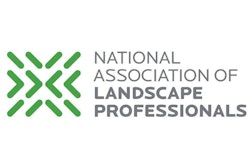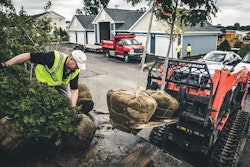 Photo: Pixabay
Photo: PixabayThis is part one in a three-part series. The sequel article will publish on TLC tomorrow.
Recently, the National Association of Landscape Professionals (NALP) hosted a Workforce Summit in Alexandria, Virginia, to address the increasing labor shortage facing the green industry today.
During this time, numerous green industry professionals gathered to discuss ideas and suggestions to help bring in a more diverse group of people to the industry, such as veterans, women, students and more minority groups.
Hiring veterans
When searching for qualified green industry laborers, sometimes veterans are overlooked.
Mark Toal, Veterans’ Employment and Training Service (VETS) for the U.S. Department of Labor (DOL), discussed the issues veterans face nowadays when looking for employment and how you as a green industry employer can take advantage of this ample labor pool.
According to Toal, the median age of a veteran today is 64 years old, and nearly 50 percent of all veterans are in the workforce. Sixty-seven percent of these veterans in the workforce are 45 years or younger and 1.7 percent are under 25.
In 2018, the veteran unemployment rates continued to trend lower than non-veterans. Toal says that about 280,000 veterans are unemployed, 55 percent of these unemployed veterans are 45 years or older and 2.7 percent are under 25.
“All studies show it’s a good investment to hire veterans, but it takes effort to find and hire them,” he says.
The key to success in hiring veterans, according to Toal, is building and leveraging a network of no-cost resources, such as state workforce agencies, federal resources, veteran service organizations, U.S. Chamber of Commerce Hiring Our Heroes events and reviewing the VETS’s employer guide online.
Toal also adds that there are currently over 49,000 veterans currently participating in apprenticeship programs, and these programs allow veterans to learn a trade and use their GI Bill benefits to receive a tax-free monthly stipend.
Toal says that the post-9/11 GI Bill provides a monthly tax-free stipend (varies by employer location), and it is paid in addition to the wages earned as an apprentice. Veterans will continue to receive a stipend for every month of their apprenticeship, and after six months, the stipend gradually reduces and is offset by progressive wage increases. Additionally, Toal says that many registered apprenticeships have some classroom training and can receive $83 per month for books and supplies.
When discussing the topic of hiring veterans with post-traumatic stress disorder (PTSD), Toal shared that 15 percent of veterans actually have PTSD, and during his career he’s had many claim to have the disorder when they’ve never been overseas.
“When you talk about who’s really been in combat and who hasn’t, the numbers are really small,” he says. “Smaller than you would think. That’s not to downplay those that have PTSD, but the numbers are small. Those that truly have it, we have to take care of them.”
If you find that a recently-hired veteran is experiencing PTSD while working, Toal recommends partnering that veteran up with a mentor/partner from their same unit, such as a Marine with a Marine or combat arms with combat arms.
“It’s very simple to me,” he says. “Find a reason to hire a veteran. You train them, you give them expectations, you give them feedback and you hold them accountable. A veteran should know accountability better than anyone else, and if they don’t work out, they don’t work out. It’s not a social welfare deal here. It’s about a good business decision.”
Check back tomorrow for part two of this series, where we’ll focus on how you can create a multicultural company.











